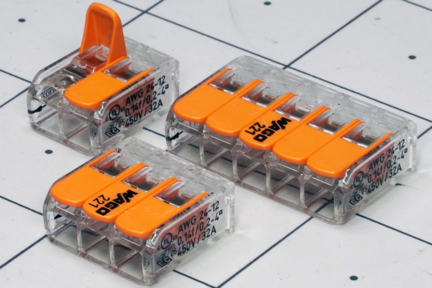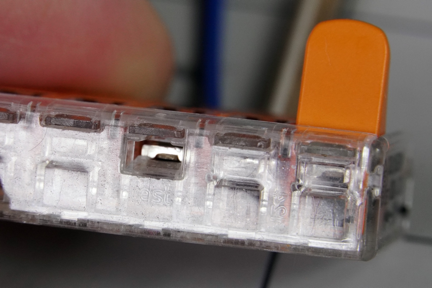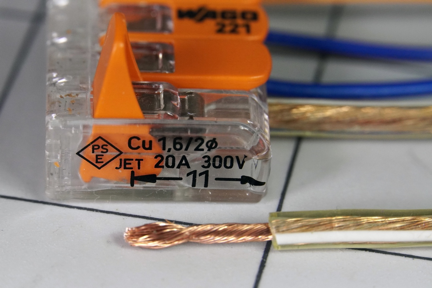If you need to splice wires together in the field, the default option is often to use screw-in electrical connector itself, or even wire nuts and electrical tape. While both methods nominally work, there’s some technique involved in twisting things together. Too loose and the wires may not be secure; too tight and you may end up damaging the connector itself, or having the wires pop out, in the case of wire nuts.
While you might think this is a necessary evil of the job, is there actually an easier method? A more reliable method? The answer to both is a resounding "yes," in the form of lever nut-style WAGO wire connectors.
WAGO Lever Nuts

WAGO pioneered lever nuts, receiving UL certification on the first such device in 2003. To use them, one simply has to strip wires to length, pull the appropriate connector lever up, push the wire in place, and flip the lever back down. Their blocks come in 2, 3, and 5 wire formats, in two different styles for their newer WAGO 221 series connectors.
The older 222 line accommodates wire between 28 and 12 AWG stranded or solid-core wires (.08 – 2.5mm²). Note that higher numbers indicate thinner wire. Connectors are UL listed for 600V and 20A capacity. The 221 line comes in two different variations. The 12 AWG version can work with wires between 24 and 12 AWG (.2 – 4mm²), and is UL listed for 600V and 20A. The 10 AWG version can work with between 20 and 10 AWG (.5-6mm²) and is UL listed for 600V and 30A.
Generic 222-style lever nut connectors can be found, but WAGO is such a leader in this space that the term “WAGO connector” is now applied as a general term. What you won’t generally find in the generic form are the WAGO 221-style nuts, which have some very attractive features, even compared to the 222. The one apparent advantage of the 222 is that it can accommodate a wider range of wires in one single package.
WAGO 221 Connectors


The WAGO 221 series presents a number of important advantages over its predecessor. First, these new connectors are much smaller—40% size reduction based on the 12 AWG type—saving space in crowded panels. The levers are also designed to need less force to pry open and closed. The WAGO 222 series has a single recessed test point, while the WAGO 221 has two on each connector: one on the front and one in the back, under a lever. Both even have guides on the nuts themselves for how far the wire needs to be stripped.
Perhaps the coolest feature of the WAGO 221 connector, however, is its clear design, allowing you to clearly see whether your wire is properly positioned inside the clamping compartment. Either style of connector is really an amazing innovation, holding a variety of wire gauges securely, with very little effort! The WAGO 221 style presents a number of important advantages, though the WAGO 222 is rated to grip a finer gauge of wire (down to 28 AWG) when needed.



